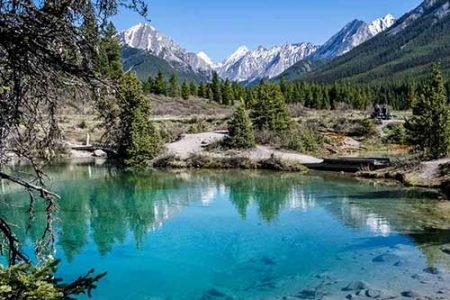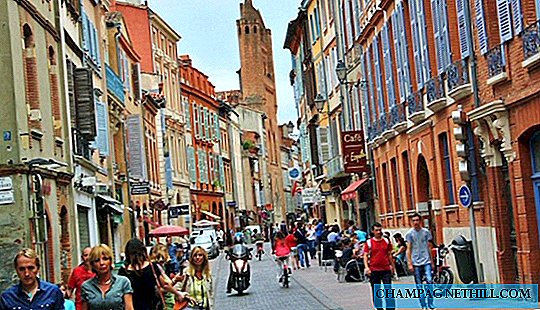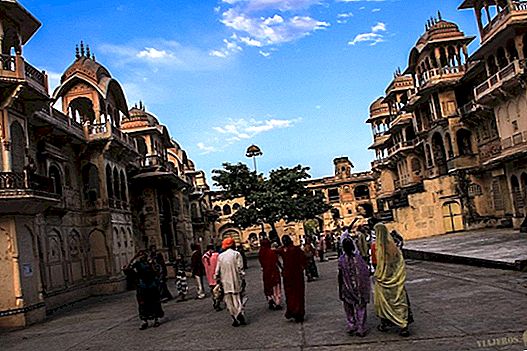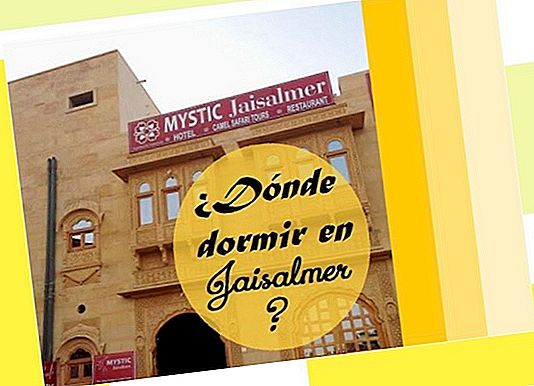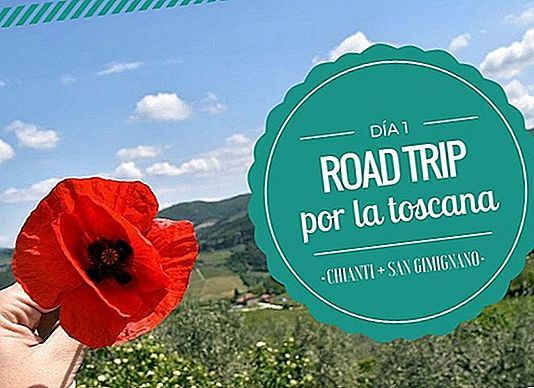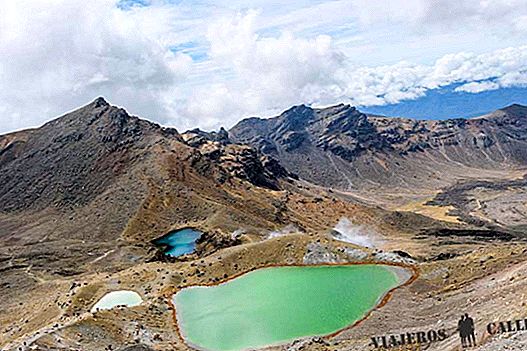Is guide to travel to Lisbon, will help you prepare your getaway to a city full of unforgettable corners and that makes you fall in love with all the travelers who visit it.
In Lisbon, known as the city of the 7 hills, you can enjoy the city while walking through decadent and romantic neighborhoods like Alfama, watch the sunset from one of its magnificent viewpoints, tastings Belém pastís, you travel the city in an old tram or you hear the melancholic chant of the fado in some traditional tavern, among many other things.
Based on the experience of our trip to Lisbon in 4 days, we have made this selection of 10 essential tips for traveling to Lisbon.We start!
1. What is the best time?
Although it's always a good time to travel to LisbonThe best season is the spring and autumn seasons, when temperatures are pleasant and prices are more affordable.
In summer, temperatures soar to 35 degrees, at the same rate that the number of tourists and hotel prices rise.
The winters, although the temperatures are not so low, are usually rainy, the hours of light are scarcer and the prices are lower.
2. Entry requirements
The citizens of Spain and all the countries of the European Union do not need any type of visa to travel to Lisbon, they just have to show their ID or Passport. To know the entry requirements, if you are from another country, it is advisable to check with the Portuguese Embassy or look at the page of the Ministry of Foreign Affairs of your country.
Another of the almost mandatory documents if you are from the European Union, is the European Health Card, which covers any medical setbacks. If you are from another country or want a wider coverage that includes services such as repatriation, we recommend you to take the best possible travel insurance.
We always travel insured with Mondo, with whom we carry a totally adequate insurance to the needs that we will have on the trip. Hiring your insurance here with Mondo, just for being a Street Travelers reader, you have a 5% discount.

3 How to go from Lisbon airport to downtown or to your hotel?
Lisbon or Portela Airport is located 7 kilometers from the city and has two terminals connected by a free bus. The options for transferring from the airport to the city center or to your accommodation are:
- Meter: the red metro line that leaves Terminal 1, operating from 06h to 01h, will take you to the center in half an hour for 1.95 euros. To get to the most central stations such as Baixa Chiado and Rossio you will have to change trains in Sao Sebastio, to connect with the blue line or in Alameda for the green one.
- Bus: Line 1 of the aerobus takes you to the central stations of Rossio and Plaza del Comercio, in about 20 minutes for 4 euros or 6 euros if you buy round trip. If you arrive at dawn, you have the 208 line that leaves you at the Plaza del Comercio and Plaza de Figueira stops, in half an hour for 1.95 euros. You can book the aerobus here in advance.
- Private transfer to the hotel: A driver will take you directly from the arrivals terminal to the door of your hotel in less than half an hour. You can book it here.
- Cab: It has a price between 15 and 20 euros.
In this post you can expand the information on how to go from Lisbon airport to downtown.

Rossio Station
4. Where to sleep in Lisbon?
If you go to travel to Lisbon, especially in summer, we recommend you book the accommodation several months in advance, to find a well located hotel and good prices.
Our favorite area to stay in Lisbon is Alfama, the most charming and picturesque neighborhood of the city and although communication by public transport with other points of the city and the airport is not as good as the surroundings of Rossio Square and the Commerce Square is counteracted by its authenticity of the neighborhood and the views of the city.
We stayed at the This is Lisbon Hostel, located just 5 minutes walk from the Rossio metro station and the St. George's Castle which in addition to its excellent location, has a terrace overlooking the city, a full breakfast and One of the best quality / price ratios in the city.
If you want to stay in a better communicated area and with more leisure and dining options, we recommend you to look around Avenida da Liberdade, which goes from the Marqués de Pombal Square to the Rossio Square.
Another good sleeping area is La Baixa, which runs from Rossio to the Praza del Comercio, having a great hotel offer and being close to all the points of interest in the city.
Two other charming neighborhoods to find a hotel or hostel is Chiado and the Barrio Alto, where some of the best shops in the city, historic cafés and a lively nightlife are concentrated.
A good option to find your perfect accommodation is to use this recommended search engine.
For more information you can consult this post about where to stay in Lisbon.

La Alfama neighborhood
5. How to move in Lisbon?
One of the best tips for traveling to Lisbon It is to travel all you can of the city on foot and use transport only to reach its highest viewpoints and the farthest neighborhoods such as Bélem.
The most popular and oldest means of public transport in Lisbon is the tram, an attraction of the city by itself.
A good way to try this transport is to make a stretch in the historic yellow wooden tram 28, which goes from the Castle of San Jorge to the Barrio Alto, passing through the most famous neighborhoods of the city.
Another of the most used trams is number 15 that will take you from the Commerce Square to the Bélem District, where the Jeronimos Monastery, the Bélem Tower and the Monument to the Discoveries are located.
Each trip by tram costs almost 3 euros, so it is profitable to buy the Lisbon Card, which offers unlimited public transport and free admission to more than thirty attractions, including the Jeronimos Monastery and the Tower of Bélem.
Tram schedules depend on each line, but are normally operational from 7 am to 9 pm.
The metro is a good option to make the transfer from the airport, but not to move around the center, as there are no stops in essential neighborhoods such as La Alfama or Bélem.
The bus is also not a very common means of transport to get around the city center and we would only recommend it to go to the airport or to the Park of Nations, the modern area of the city.
However, what is very practical to move around Lisbon are the elevators, a kind of funiculars that serve to climb the steepest slopes and reach fantastic viewpoints. Among the most famous are the Elevador de Santa Justa that connects the neighborhoods La Baixa with the Barrio Alto and the elevator da Glória that will take you to the San Pedro de Alcántara viewpoint.

Take elevators, one of the best tips for traveling to Lisbon
6. Places of interest when traveling to Lisbon
Another of the best tips for traveling to Lisbon It is to make a list with all the places you want to visit and experiences that you want to have, to make the most of your time.
The neighborhood of La Alfama is a good place to start to know the city, concentrating some of the most essential points of interest, such as the viewpoints of Santa Lucia and Portas de Sol, our favorite in the city.
In this area, in addition to walking through its steep and labyrinthine cobbled streets in the neighborhood, we recommend entering the Sé, the Cathedral of Lisbon.
Next to Alfama is the Castle of San Jorge, a fortress with great views of the city and the Graça viewpoint, perfect for watching the sunset.
Another of our favorite neighborhoods is the bohemian Chiado, which has historic cafés such as Café a Brasileira and fantastic bookstores such as the Livraria Bertrand, considered the oldest in the world. Although our favorite place in the neighborhood are the ruins of the Carmo Convent. To get to this neighborhood we recommend you to climb the spectacular Elevador de Santa Justa.
A few meters from Chiado is the Barrio Alto, which has the best places in the city to go out at night like Pavilhão Chinês and Music Box and also has the fantastic viewpoint of San Pedro de Alcántara.
An interesting option to know the history of the most popular neighborhoods of the city center is to book this free tour of Lisbon Free! With a guide in Spanish, considered one of the best free tours in Lisbon.
Between Alfama and Chiado is the La Baixa neighborhood, which offers a nice walk along the Rua Augusta shopping street to the Commerce Square, located on the banks of the Tagus River.
In the Commerce Square you can take tram 15, which will take you to the Belém District or book this boat trip on the Tagus, which will leave you next to the Belém Tower.
In the neighborhood of Belém you can not miss the Jeronimos Monastery, the Tower of Bélem, the Monument to the Discoveries and above all, try the freshly made pastries of the Pastry Shop or Pastéis de Belém.
As a final icing on a trip to Lisbon you can book this sailboat ride on the Tagus at sunset, where you will cross the 25 de Abril Bridge and see the most famous neighborhoods in the city from other perspectives.
A good way to not miss anything about this city is to complete this list of the 10 essential places to visit in Lisbon and this one of the best things to do in Lisbon.
7. Routes through the city
Before traveling to Lisbon or leaving the hotel, it is important to trace the itineraries on foot and by tram through the city, to have the maximum possible experiences.
The entire historic center can be walked perfectly and used in specific cases the elevators, tram 28 to the center and 15 to reach the neighborhood of Bélem.
To not miss anything and learn about the history of the main neighborhoods of Lisbon it is interesting to do a guided tour in Spanish. Among the most recommended tours to get to know the famous neighborhood of Bélem well is
this tour that includes the visit to the Jeronimos Monastery or this free tour of Belém Free! , both with guide in Spanish.
Another labyrinthine neighborhood where you can find the true essence of the city and it is very useful to book a free tour with a guide in Spanish, is La Alfama.
Based on the days we spent in Lisbon we have made these three personalized guides to get to know the city according to the days you have.

Monastery of los jeronimos
8. Where to eat in Lisbon?
Another reason for travel to Lisbon It is to taste its delicious cuisine, always accompanied by a good Portuguese wine. Some of the most typical dishes are:
- Bacalhau com Natas: crumbled baked cod, onion, french fries and milk cream.
- Bacalhau to Brás: a cod casserole with onion, fried potatoes and egg.
- Sardinhas: Grilled sardines.
- Green soup: Soup made from mashed potatoes with cabbage strips.
- Caldeirada de Peixe: Traditional cooked, made with different fish cooked together in a cauldron.
- Pork meat à alentejana : combination of pork and clams, with potato and cilantro.
- Twelve Rice: rice pudding, sugar, lemon and cinnamon.
- Belem cakes: puff pastry stuffed with a custard.
Among the most recommended restaurants, located in tourist places, to try these typical dishes, you have: Da Prata 52, Paladarium, Os Jeronimos, Tasca Mastai, the Duque Restaurant, Tapa Bucho, Flor da Laranja, Marisqueira M and Ti Natércia.
After lunch, we recommend you to try the delicious freshly baked Belém pastries in the Pastry Shop or Pastéis de Belém or in Manteigaria.
You can expand the information by reading this post of the best restaurants to eat in Lisbon.
To have a drink at night, Lisbon has a wide range of charming venues such as Café a Brasileira, Pavilhão Chinês, Cervejaria Trindade or Artis bar.

Bélem cakes
9. Excursions
A good way to complete a trip to Lisbon is to make an excursion to one of the most essential places to see in Portugal, which are located near the city.
These day trips by public or private transport will take you to know places like Sintra, Cascais, Óbidos, Fátima and Setúbal, among others.
One of the best excursions in Lisbon, if not the best, is the visit to Sintra, a city famous for its magnificent palaces and gardens.
This city, a World Heritage Site and located in a natural park, has in the Palacio da Pena and La Quinta da Regaleira, its most essential places.
To go from Lisbon to Sintra, located half an hour away, you can take a train at the Rossio Station, Oriente or Sete Rios.
If you have extra time you can go by bus to Cascais, 20 minutes from Sintra, an old fishing village that stands out for its beaches and a charming historic center.
The second recommendation is the visit Óbidos, one of the most beautiful villages to visit in Europe.
After strolling through its medieval historical center surrounded by walls of the fifteenth century you can return to Lisbon or head to the Basilica of Fatima, one of the most important pilgrimage sites in the world, thanks to the 6 apparitions of the Virgin Mary in 1914.
The best way to visit these two wonders is by rental car as they are not well connected by public transport. Another option is to make the visits separately by taking a bus at the Campo Grande station in Lisbon to go to Óbidos and another at the Sete Ríos station to go to Fatima.
The last recommended excursion when traveling to Lisbon is the Arrábida Natural Park, which stands out for its calcareous cliffs and wild nature. During the tour you can also approach the city of Setúbal with several interesting churches and fortresses, and the fishing village of Sesimbra.
If you do not want to rent a car you can go to Setúbal from the Sete Rios or Roma-Areeiro station and to Sesimbra by bus from the Plaza de España.
A more comfortable and interesting way to visit all these places, learning its history, is to book some of these day trips with a guide in Spanish:
More tours and excursions in Lisbon here

Pena Palace
10. More tips for traveling to Lisbon
Other of the tips for traveling to Lisbon More essential are:
- Learn some words in Portuguese like bom dia (good morning), boa late (good afternoon), boa noite (good night), obrigado / a (thank you), is bom (ok), sim (yes), não (no) and I lost (sorry).
- Remember that in order not to pay commissions and always have the current change we recommend you use the N26 card to pay and the Bnext and Revolut cards to get money at the ATMs. They are the ones we use, They are free and will save you a lot. You can find more information in this article about the best cards to travel without commissions.
- Try the Ginja, a sweet cherries liqueur that has its origin in Lisbon, in the small bar A Ginjinha.
- Listen to Fado, the best known expression of Portuguese music, at Tasca do Jaime or book this night tour with dinner and fado show.
- Buy a Rooster of Barcelos, the most typical souvenir of Lisbon and Portugal.
- Although Lisbon is not a dangerous city, in places where there is a lot of accumulation of people, such as trams, it is better to carry the backpack in front and watch the wallet.
- Follow this list of the best tips for traveling to Portugal.
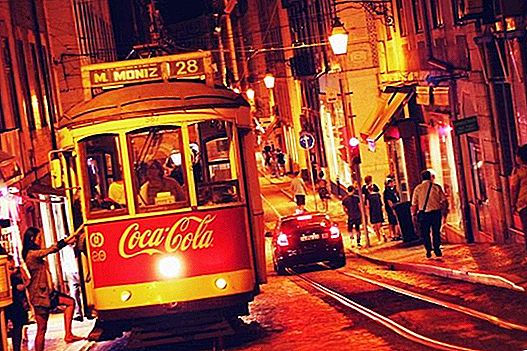
Lisbon
Do you want to travel to Lisbon?
Get it here:
The best offers of Flights to Lisbon here
The best hotels at the best prices in Lisbon here
Get € 35 for your reservation with AirBnb here
Book the best tours and excursions in / from Lisbon in Spanish here
Book your Airport⇆Lisboa transfer here
Book your travel insurance with a 5% discount here
Rent your car in Portugal at the best price here
If you feel like helping us complete the list of the 10 essential tips for traveling to Lisbon, add yours in the comments.

 The best offers of Flights to Lisbon here
The best offers of Flights to Lisbon here The best hotels at the best prices in Lisbon here
The best hotels at the best prices in Lisbon here Get € 35 for your reservation with AirBnb here
Get € 35 for your reservation with AirBnb here Book the best tours and excursions in / from Lisbon in Spanish here
Book the best tours and excursions in / from Lisbon in Spanish here Book your Airport⇆Lisboa transfer here
Book your Airport⇆Lisboa transfer here Book your travel insurance with a 5% discount here
Book your travel insurance with a 5% discount here Rent your car in Portugal at the best price here
Rent your car in Portugal at the best price here